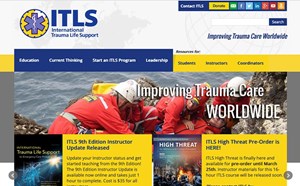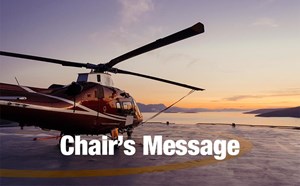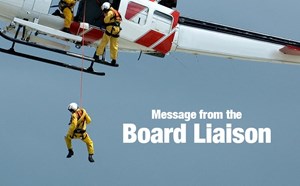
Legislative Update and Impact
Currently, two bills have been introduced in the House of Representatives of the 115thCongress of the United States regarding reimbursement for air medical services: H.R. 3378 and H.R. 3780. Let’s delve into these two bills.
In July 2017, Representatives Jackie Walorski (R-IN), Suzan DelBene (D-WA), Bill Johnson (R-OH), Raul Ruiz (D-CA), and Pete Sessions (R-TX) introduced H.R. 3378, the Ensuring Access to Air Ambulance Services Act of 2017. This legislation seeks to amend Title XVIII of the Social Security Act to modernize Centers for Medicare and Medicaid (CMS) reimbursement for “air ambulance suppliers and providers”.
The bill includes provisions for air ambulance suppliers and providers to submit cost data beginning in 2019 and quality data beginning in 2020. The cost data in the bill language to be submitted include: maintenance of aircrafts; medical supplies and equipment; fuel; employee expenses; recurring training related to aviation, maintenance, communication, and clinical; rent and utilities; communications; travel; hull and aviation liability insurance, life insurance, and professional malpractice insurance; marketing; supplies and equipment; overhead support; aircraft ownership expenses; depreciation; safety enhancement capital costs; and safety enhancement recurring costs.
The bill provides that Medicare will increase the base rate of the current fee schedule by 12% in 2018 and by 20% in 2019 and 2020. Beginning in 2021 through rulemaking, the fee schedule will be updated based on the cost data reported for the two prior years. During the two years 2019-2020, if an air ambulance supplier or provider does not report cost data, that supplier or provider does not receive the base rate increase.
Quality data submission begins in 2020 for five specific metrics as listed in the bill language: mechanical ventilator use in patients with advanced airways; interpretation of 12-lead electrocardiogram documented on patient care record for those transported with primary cardiac diagnoses; continuous waveform capnography for mechanically ventilated patients; advanced airway established without newly developed hypoxia or hypotension; and tracheal intubation verified with capnography and direct visualization, chest radiograph, or symmetric breath sounds.
A value based purchasing program begins in 2024 which allows four years to develop the benchmark for performance on each of the five quality metrics. A composite performance quality score will be calculated for each air ambulance supplier or provider as the cumulative of the score for each of the five quality metrics; thus, each metric is weighted equally. Air ambulance suppliers and providers will be ranked based on their composite performance quality score and the amount of reimbursement that each receives will be based on the ranking and determined by the Secretary of the Department of Health and Human Services. This value based purchasing program is cost-neutral as the funds come from an across-the-board 2% reduction in reimbursement for all air ambulance suppliers and providers. Any air ambulance supplier or provider that does not submit quality data has a reduction in their payment rate by 10% beginning in 2024.
Now let’s discuss the second bill introduced.
On September 14, 2017, Representatives Richard Hudson (R-NC), Joseph Kennedy, III (D-MA), Lynn Jenkins (R-KS), and Ron Kind (D-WI) introduced HR 3780, the Air Ambulance Quality and Accountability Act. This bill also seeks to amend Title XVIII of the Social Security Act and creates conditions for participation for air ambulance providers with CMS, to begin two years following enactment. The bill language specifies that the minimum standards for participation include: scope of practice, training and clinical capability of medical personnel relevant to medical condition of patients transported; medical equipment (such as patient monitoring, respiratory and hemodynamic and other relevant patient support equipment), devices, technology and formularies; vehicle attributes to support needed care, including configuration and conditions of medical environment, electrical supply in air ambulance and other related equipment; documentation standards, such as patient care records, timeline of care and transport, history of present illness and assessments, and documentation specific to diagnostic and therapeutic procedures; medical direction and physician medical oversight, such as credentials of physicians; reporting of always events, such as care coordination and transition, pain management, preventing ventilator acquired pneumonia or invasive line or wound infections); reporting of never events, such as loss of oxygen, delivery of a baby during transport, patient death or disability due to vehicle failure or crash, transport to unintended destination, dropping a patient or allowing a fall during movement of patient, failure to communicate time of arrival, hyglocemia [hypoglycemia], and medication errors; patient safety and infection control, physician directed clinical quality management and clinical performance improvement programs including quality assurance, utilization review, outcomes, proficiency measures and patient safety; and standards relevant to particular populations, such as those on balloon pumps or ECMO. The bill then indicates that the Secretary of Health and Human Services can designate accreditation organizations and give deemed status to an air ambulance provider and supplier that has such accreditation, as meeting the minimum standards of conditions for participation.
The bill requires submission of cost data beginning no sooner than one year after enactment and if no data are reported by two years after enactment, that air ambulance supplier or provider may have its Medicare reimbursement suspended. The costs to report in the bill language are: geographic location factors, including mileage and number of providers in the service area; capital and operational costs, such as the type of aircraft, including fixed wing aircraft, rotary wing aircraft – single or twin engine, instrumented flight or visual flight; maintenance of aircraft, including specialty clinical equipment; medical supplies; employee expenses, including salaries and insurance (life, health, and liability); building expenses, including rent and maintenance; and any other costs as specified by the Secretary, in consultation with the Secretary of Transportation, as needed to be included under this subparagraph for purposes of informing the report and evaluation under section 6 of the Air Ambulance Quality and Accountability Act or for purposes of enabling Congress to make appropriate determinations about payment under this section to air ambulance providers and suppliers.
The bill specifies a quality reporting system and pay for performance system that lowers reimbursement by 2% for any air ambulance supplier or provider that does not report data for years one to three. For those that submit data, beginning in the ninth year after enactment, reimbursement varies each reporting year from -5% to 5% depending on the performance for each year period and any air ambulance supplier or provider not reporting in these years has a payment rate decrease of 5%. The metrics used and performance of each air ambulance provider or supplier are made public and the specific metrics are left to be developed by the Secretary of Health and Human Services (HHS). The three categories of metrics in the bill language are: over-triage; patient safety; and clinical quality. The bill specifies that quality data reporting begin five years following at least 12 months following enactment of this bill [the sixth year] and that over-triage is required; however, over-triage is not defined. For reporting in years six through nine, HHS will develop at least three metrics each for the patient safety and clinical quality categories and air ambulance suppliers and providers must report two of them then beginning in year 10 after enactment, HHS will develop six measures in each category and air ambulance suppliers or providers must report four of them. HHS may change the measures at any time.
The final provision of H.R. 3780 specifies that within three years following December 31 following enactment [the fourth year], the Medicare Payment Advisory Commission shall submit to Congress a report evaluating the costs of air medical services based on cost data submitted under this bill, including possible higher costs from: aviation instrument flight control; provision of care to critically ill or injured patients; the provision of services in geographically isolated areas; and the provision of care to uninsured individuals. Furthermore, the bill recommends consideration for higher reimbursement for services: higher levels of clinical capability to serve the most critically ill and injured patients; that utilize advanced and expense avionics such as Instrument Flight Rules; whether uncompensated care borne by air ambulance providers and suppliers impedes access; the degree to which there is variation in the utilization of air ambulance services on a per capita and per transport basis, including whether the undersupply or oversupply of helicopters or fixed wing aircraft in a geographic region affects access and the volume and adequacy of payments under such title with regard to utilization; the degree to which membership programs are utilized by air ambulance providers and suppliers to sustain their operations, and if revenue from membership programs is used to reduce their costs to provide capital funding, and whether such programs are beneficial to Medicare beneficiaries; the degree of subsidization that occurs from private insurers or hospitals sponsoring air ambulance providers or suppliers to cover inadequate payments under title XVIII or XIX of the Social Security Act and enable reasonable profitability; the ratio of charges to Medicare reimbursement and the impact on beneficiary cost sharing of cost, utilization, and variation in air ambulance services; appropriate financial or other incentives for the utilization of ground critical care transport where medically appropriate; the degree to which a quality reporting and performance program based upon patient safety measures and clinical quality measures should be used in determining a value based payment model for suppliers and providers of air ambulance service; and any other information deemed relevant and appropriate by the Medicare Payment Advisory Commission for the purposes of providing such recommendations.
Now, my commentary:
The current Medicare fee schedule was developed in 1998 and while Medicare reimbursement has increased over the past 19 years, the increases have been primarily based on inflation so the amount has not matched the increase in the cost of providing air ambulance services. Reimbursement has remained based on a lift-off fee and a loaded mileage fee. Never has the air ambulance industry proposed to submit operational data, cost data, or clinical quality data in order to receive reimbursement. If you agree that air ambulance transport is healthcare, then modification of reimbursement parameters to include clinical quality data is inevitable.
There are notable differences between the bills. H.R. 3378 has more specifics while H.R. 3780 gives more leeway to the Secretary of Health and Human Services to decide parameters for reimbursement, especially the specific patient safety and clinical quality metrics. H.R. 3378 provides an immediate increase in Medicare reimbursement while H.R. 3780 does not. H.R. 3780 includes conditions for participation with Medicare while H.R. 3378 does not. Both bills require cost reporting as part of the basis for reimbursement and H.R. 3378 has more comprehensive cost reporting than H.R. 3780. Both bills speak to the importance of maintaining air ambulances in operation in rural areas of the United States but in my opinion, only H.R. 3378 supports this by providing an increase in reimbursement immediately. Remember that air ambulance services used to receive an increase in reimbursement for transporting patients from rural and super-rural zip codes, the Medicare extenders program, but this is no longer the case. In my service, Medicare patients comprise 35% of all patients transported. As the baby boomers enter the Medicare program and the population lives longer and longer, Medicare patients will comprise a higher and higher percentage of the patients transported by all air ambulances, exaggerating the shortfall in reimbursement in the future. Already today, reimbursement is below cost for 7 of 10 patients transported. Cost-shifting is therefore necessary to sustain operations and each service has different opportunities to cost-shift. Hospital based programs have the large hospital or healthcare system source of funds to support cost-shifting while independent air medical services rely on private insurers to make up the deficit from Medicare, Medicaid, self-pay, and other governmental and private insurers that reimburse below the cost of transport. Without fair reimbursement for air ambulance suppliers and providers from Medicare, air ambulance bases will close, especially in rural America leaving millions of patients without access to tertiary care because millions of rural citizens can only access tertiary care by air ambulance transport. For years, ACEP has advocated strongly for patient access to care.
ACEP also advocates for fair reimbursement for services. An independent study of the air ambulance industry by Xcendadetermined the median cost of an air ambulance transport at $10,199. This amount is remarkably similar to the amount published in a recent paper in the Journal of Foot and Ankle Surgery (access summary here) that cited the average cost of an air ambulance transport at $10,220 + $108/mile. Medicare currently reimburses just above half of these figures with some variation in reimbursement due to the different number of loaded miles, still well below the cost of transport.
The recent focus on balance billing and the cost of out-of-network services throughout healthcare has shone a light on the practice of air medical services balance billing patients. Patients should not be expected to make up the difference from insurance underpayments.
A legislative solution to underpayment for services is an appropriate approach; however, the fact that two bills have been introduced to Congress does not help the success of either bill being considered or passed. Air ambulance claims to CMS are estimated to be 0.5% of the total Medicare spend annually and the number of claims is approximately 100,000 annually, compared to 15,000,000 ground ambulance claims. The amount of money being discussed relative to the rest of the monies spent by the government is not “on the radar” of most in Washington, D.C. so having two bills go through the same markup process, the same committees, gives the impression that we, as a community do not agree. We certainly have differences of opinion but we should work out our own internal differences then approach Congress as an industry with one solution that serves us all. I do appreciate that this is easier typed than done. Still, dialogue within our air medical is more important now than ever so as physicians, I invite each and every one of you to begin participating in the discussion now.
David Stuhlmiller, MD, FACEP, CMTE
Dr. Stuhlmiller is the ACEP, Air Medical Transport Section, Immediate Past Chair and the Chief Medical Officer at Air Methods, Air Medical Transport.



